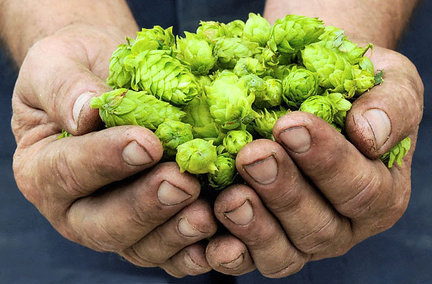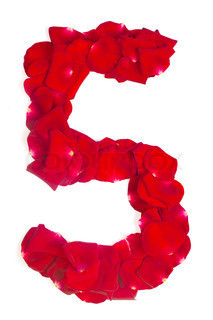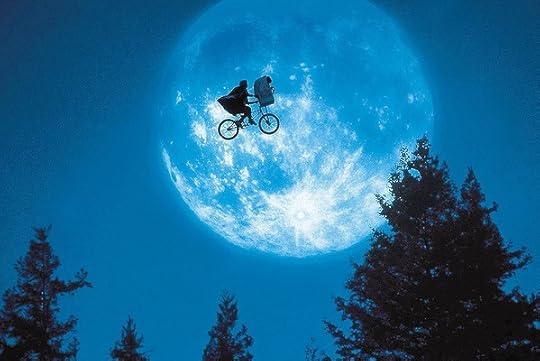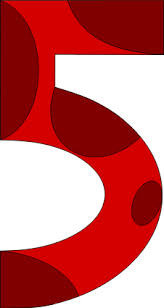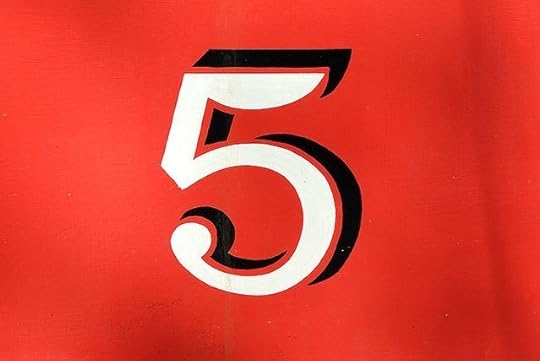Josh Kilmer-Purcell's Blog, page 70
June 24, 2013
Something Brewing
Hop Farming
New York State has been part of the craft beer revolution, with many successful microbreweries now keeping the public happy. Homebrewing has also become a passionate hobby for many. Along with these developments is a return to hop farming, once prevalent in upstate New York. In the latter half of the 19th century and into the 20th century, hop farming helped shaped the economy and social life of Sharon Springs and neighboring communities.
By the Middle Ages hops were the most widely used flavoring and stabilizer for beer making in Europe, having replaced a wide variety of herbs and flowers. The hop plant (Humulus lupulus) was reportedly introduced to America in about 1630. In the 18th century, with the growing number of German settlers in upstate New York, beer making became common along with a need for more and more hops. Farmers grew a variety of strains for their special attributes. By the mid-19th century, New York State had attained the national leadership in the production of hops, with Otsego, Schoharie, Montgomery, Oneida, Madison, and Chenango Counties having the most productive hop farms – the so-called hop belt. Many year-round residents of Sharon Springs grew hops along with their other crops. Successful businessmen including urban brewers, who frequented Sharon Springs for its spas, also invested in regional hop farming.
To create a new hopyard cuttings were planted in small hills along rows about six feet apart. By the second spring hop poles – typically 12 feet high and of cedar – were needed to support the rapidly growing vines or bines (the flexible twining stems). By midsummer the hopyard resembled a small forest with tall plants. Clusters of green cones containing the female buds grew at the top of the plants. Toward the end of summer, the buds were harvested by cutting the bines, lowering the poles, and plucking the buds over large boxes. Pickers, many of them migrant workers from Albany or New York City, sang songs during the arduous task, some of the songs having originated among the hop pickers of England. The boxes were then used to carry the buds to hop barns (also called hop houses and hop kilns) for drying over charcoal fires.
The price of hops, set in New York City, varied significantly, ranging from about 10 cents to a dollar a pound. Since the cost of raising a crop was about 8 to 12 cents per pound, the risk was great but so was the potential of a big payoff. In 1889, The New York Sun reported a “mania” for hop farming.
The railroad played an important part in the hop business. Some of the pickers were brought in by train; hop poles were shipped in; and some of the bales of dried buds were shipped out. On Chestnut Street in Sharon Springs, opposite the D&H depot (see our earlier blog “All Aboard!”) – the Hop Exchange Hotel (later known as the Pratt) became a commercial and social center for the hop culture. Out-of-towners during harvest time included the well-to-do frequenting spas as well as the hard-partying pickers with their songs and dances.
Hop farming in upstate New York declined rapidly over the ensuing decades. Repeated growing in the same hopyards depleted the soil, contributing to the plant’s lowered resistance to disease and insects. In 1909, a blight – the downy mildew Sphaerotheca humuli, popularly known as blue mold – attacked the hop crops. In 1914, an attack of aphids further reduced hop yields. Meanwhile, hop farms out west offered stiff competition; Oregon, California, and Washington took the lead in hop sales. Prohibition, beginning in 1920, eliminated much of the need for hops. Dairy farming and farming corn, grain, and potatoes again took the lead. Hop farming virtually disappeared from Schoharie County and the other counties where it once thrived.
But some enterprising farmers are at it again. Wish them luck while you enjoy locally brewed craft beers.
The History Boys are
Chris Campbell has made his permanent home in Cherry Valley, NY. The Campbell family dates back to 1739 in this town, situated about eight miles from Sharon Springs. Some family members were captured by Tories and Iroquois allies in the Cherry Valley Massacre of 1778 during the American Revolution and taken to Canada, released two years later in Albany as part of a prisoner exchange. Chris is a rare book and map collector and has had a lifelong interest in history, especially relating to upstate New York and colonial land patents. He was the founder and first chairman of the Cherry Valley Planning Board and has worked as a surveyor and realtor as well as a researcher for the Otsego County map department. His hobbies include Ham radio.
Carl Waldman, also living in Cherry Valley, is a former archivist for the New York State Historical Association in Cooperstown. He is he author of a number of reference books published by Facts On File, including Atlas of the North American Indian and Encyclopedia of Native American Tribes, both originally published in the 1980s and both in their third editions. He is the co-author of Encyclopedia of Exploration (2005) and Encyclopedia of European Peoples (2006). Carl has also done screenwriting about Native Americans, including an episode of Miami Vice entitled “Indian Wars” and the Legend of Two-Path, a drama about the Native American side of Raleigh’s Lost Colony, shown at Festival Park on Roanoke Island in North Carolina. His hobbies include music and he works with young people in the Performance and Production Workshops at the Cherry Valley Old School.
Carl has recently published an ebook through Alva Press, Streetscape: A Jake Soho Mystery
June 20, 2013
5 Beautiful Things
Muralist and Painter Eric Beare
I first saw the name Eric Beare in a 2002 issue of Martha Stewart Living magazine. He had been commissioned by Martha to paint a mural in the front entrance of her home in Connecticut based on the work of American painter Rufus Porter: simplistic hills and valleys and stylized trees all painted in a subdued grisaille palette ascending beside the staircase to the second floor of her home. It was only recently that I reached out to Eric to ask him about that mural and its inception. You can read his comments here.
Eric has a prolific and exceptional talent. His work extends into three-dimensional sculptural pieces, wall paintings in all manner of styles (traditional to abstract) and, of course, murals. He studied at the Rhode Island School of Design and began working freelance for Martha Stewart Living magazine after moving to NYC. Since then, his client list has ballooned substantially and he has been featured in the pages of Architectural Digest, Florida Design, House & Garden and the New York Times.
He has worked with fashion designer Isaac Mizrahi and has had his work exhibited at the American Museum of Natural History and the Cooper Hewitt Museum. He lives in Brooklyn where he shares a house with his two assistants (his poodles Mia and Sheriff) and tends to his beloved garden, which inspired these five botanical paintings of peonies, pitcher plants and dahlias. To see the vast array of Eric’s work, please visit his website.
Andrew Ritchie is the creator of Martha Moments, a blog devoted Martha-Stewart related content and her community of supporters. He lives and works in Toronto, Canada, and has been a longtime friend of Brent & Josh, Beekman 1802 and Sharon Springs. Each week he’ll scour the world (wide web) to find the 5 most beautiful things to inspire you. Follow Andrew on Pinterest.
June 19, 2013
Fleur-de-We
For his birthday a few years ago, Josh bought Brent a lot more Iris rhizomes than we could afford at the time. We’ve both always been in love with bearded Irises. Yes, we know they’re a little garish. And not terribly fashionable. But we both remember marveling at all the circus-colored varieties (with names to match) in our mom’s flower catalogs and pining for these expensive rhizomes. So we splurged. This was the first year they really settled in to their new home and rewarded us with many blossoms. Here are just a few:
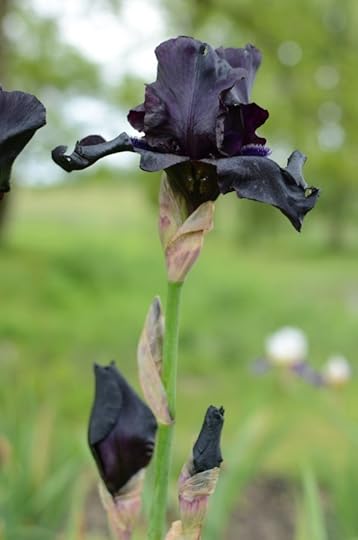
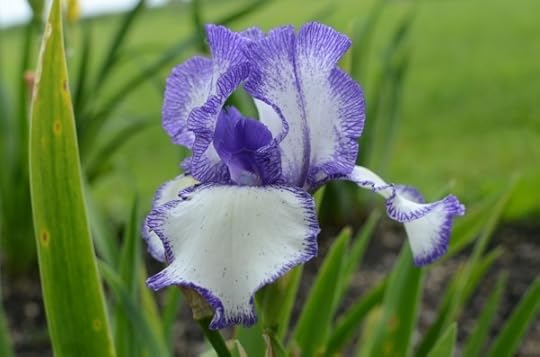



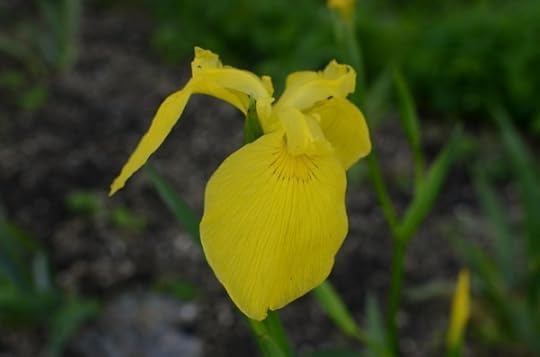


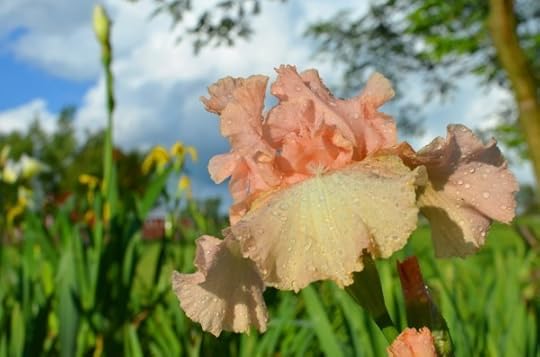



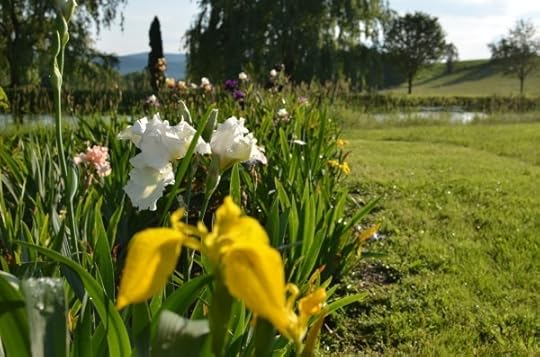




<
>
The Beekmans Go To Washington
Recently we were invited to Washington DC to speak to the USDA about diversity in farming and to accept recognition for our work. We were also invited to take part in this season’s opening of the USDA Farmers Market, held right on the agency grounds. It’s probably one of the coolest things that’s happened to us since we bought Beekman 1802 Farm. And of course we made of point of sharing that honor with Farmer John. And the goats.
We were amazed by the sheer size and breadth of the USDA. It’s the third largest federal agency, after Department of Defense and Homeland Security. And even though most people think of them as simply the part of the government that works with American farmers, the agency also includes the U.S. Forestry Service, food safety, rural development, research, overseas agricultural programs and a heckuva lot more.
Here are some photos of the trip…







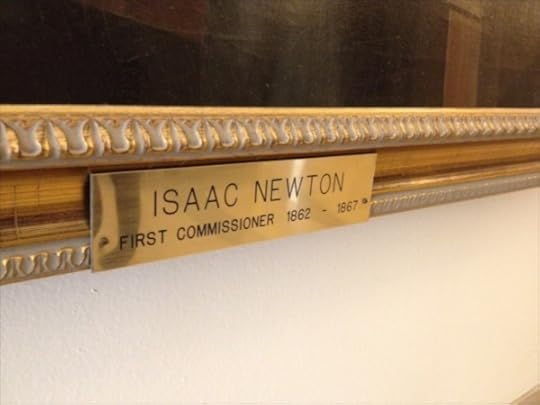
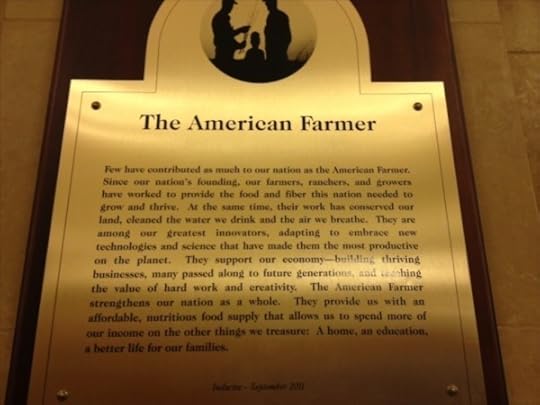






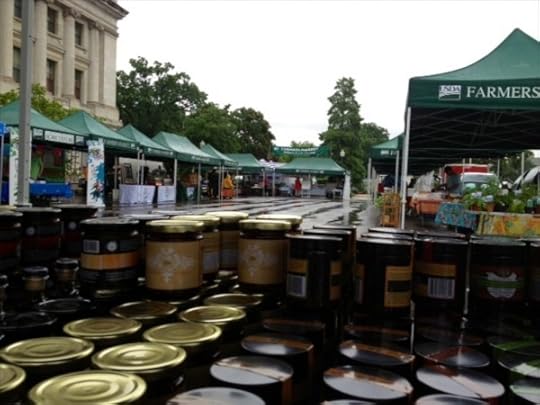






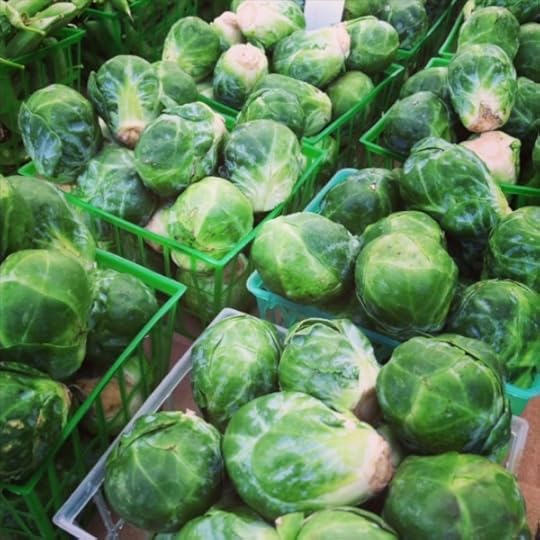
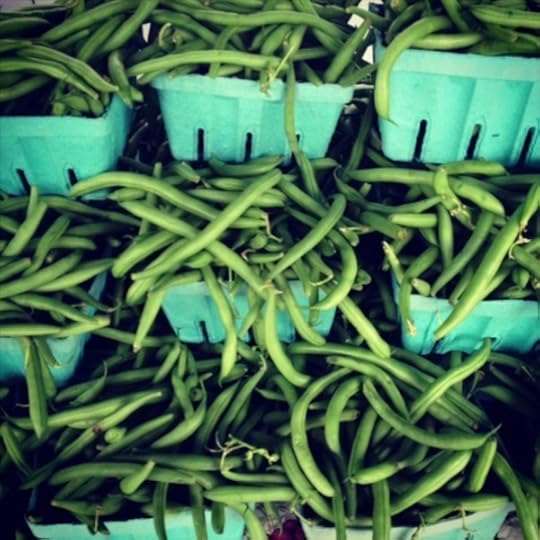

<
>
June 18, 2013
Wedding Giveaway
There’s too much talk of Bridezillas these days. Wedding days, and even the days of planning leading up to it, should be memorable. Instead of dwelling on negative behavior, we want to think about the beautiful outcomes.
While perusing the BHLDN website for wedding ideas, we came across these simple and elegant vases that can be used to hold candles, flowers, pens etc. Perfect for a country affair.
And we want you to have them!
Win a 3 piece set of these charming hobnail jars from BHLDN and make your summer entertaining sparkle.
All you have to do is tell us in the comment section below what turned out to be the most beautiful and memorable decor element of your own wedding. A winner will be chosen at random, but the real winners will be everyone who gets to share their great decorating ideas.
June 17, 2013
Over the Moon
One of the most enduring and recognizable images in cinema is of a boy named Elliot riding a bicycle, pedaling so fast that he soars into the sky—aided by a certain extraterrestrial and some movie magic.
Steven Spielberg is one of the most popular directors of all time because he captures on the screen images, feelings and sentiments that are the commonalities of life.
And we’ve all dreamt at one time or another that if we pedaled fast enough we’d take flight.
When Brent was young, he had the same banana-seat bicycle from the time he was 9 to 15 (the age at which riding bikes became uncool), If you look closely, you can still see a tiny scar on his right knee from a wipeout on the hilly gravel road behind his grandparent’s house.
Josh dreamed of a bike with a banana seat (and handlebar streamers, a basket, a bell, and a little pennant flag off of the back tire). What he got was a hand-me-down bike from his brother who was decidedly less visionary when it came to accessorizing.
We thought long and hard about what we should get one another as wedding gifts. Should it be a vacation around the world? (done that). Should it be something frivolous? (not really in our DNA).
So we ultimately decided on getting bikes.
As we love the idea of all things “heirloom”, we wanted to get quality bikes that would last the rest of our lives, and after some research we found something that was the exact mix of modern and vintage. Functional and well-designed.
In 1895, Ignaz Schwinn, a German immigrant with some bike-building experience from back in Europe, founded the Arnold, Schwinn & Company with his partner, Adolph Arnold, a meat packer and fellow German-American. Headquartered in Chicago, this new company was in the heartland of the American bicycle business where 30 factories turned out thousands of bikes each day. By 1900, American factories made a million bikes a year.
He probably would have never thought that the company he founded would one day build a completely sustainable bicycle with bamboo handles, a frame molded out of flax, and a motion-powered electricity generator that makes the entire bike glow from within at night.
If you see us on the hills of Sharon Springs, please take a wide arc around us. It’s been a while since we’ve done this.
But we feel comfortable that this is the perfect vehicle for us to ride off into the sunset…or just take a little trip over the moon.




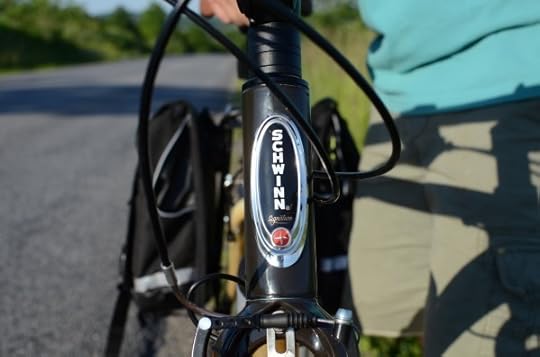







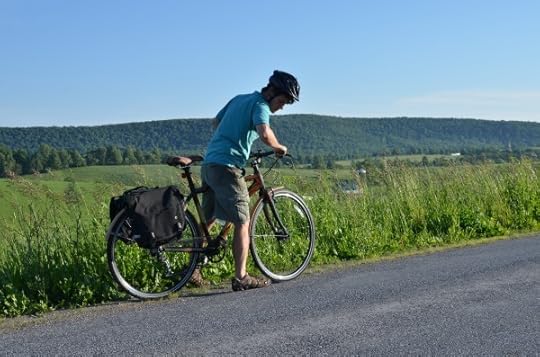




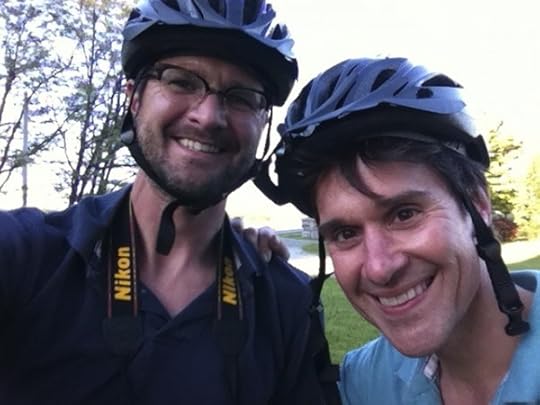
<
>
What was your childhood bike? Share your story with us in the comments section below.
June 15, 2013
Gartending: Just Peachy

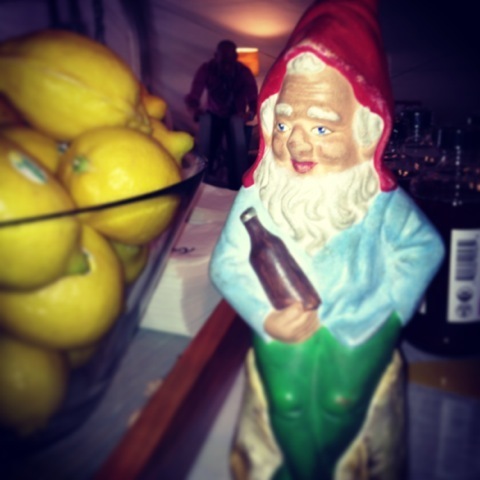
<
>
Klaus has been very busy over the past week or so. In keeping with his gartending ways, he’s been in overdrive keeping up with the weeding. So much rain has fallen and the plants are growing faster than ever before. I’ve never seen Klaus’s arms move so quickly in the soil, turning the tender plants away from the ravenous weeds.
He seems to have a plan on how to turn the soil without hands because they are hidden away from view for most of the time. What Klaus does is pretty interesting. He grasps an empty liquor bottle in his arms and turns his back.. Then he digs with the business end of the bottle- the pointy side.
Why would he do this? Let’s ask him!
Me: “Why do you turn the soil that way, Klaus?”
Klaus: “ To make harvesting easier”
Me: “What have you planted this year, Klaus?”
Klaus: “The mint comes up every year along with the lavender, but this year I just planted some gorgeous lemon thyme.”
Me: “What do you do with lemon thyme, Klaus?”
Klaus: “I muddle it with blackberry syrup and Arrogante Tequila!”
Me: “Blackberry Syrup? You mean from Sumptuous Syrups of Vermont?”
Klaus: “Ya! The same, along with lemonade made from freshly squeezed lemons and a good splash of Perrier Sparkling Natural Mineral Water, in lemon essence and a few dashes of my friend Gary Regan’s Orange Bitters!
And so it goes. Klaus has been gifted with a brilliant palate for stone fruits like peaches with the addition of richly concentrated blackberry syrup, lemon thyme and a bit of tequila. He will mix this lovely combination of flavors with a gorgeous infused ice cube infused with a pinch of lemon zest in each cube for color.
The Woodsman’s Amorous Holiday: will placate two very thirsty friends (with an extra shot on the side)
Ingredients:
1 Georgia Peach, cut into chunks then lightly grilled to release sugar but retain the essential juice
3 oz. Arrogante Tequila or your choice of Reposado Tequila
.50 Barr Hill Gin (this is your wash for the glasses)
½ tsp. freshly picked well-chopped spearmint
½ tsp. Finely chopped lemon thyme. No wood, please.
1 oz. Sumptuous Syrups of Vermont Blackberry syrup
3 oz. freshly made sweet lemonade
3 shakes of the Regan’s Orange Bitters
Mavea “Inspired Water” ice… frozen with the zest of 2 lemons in a standard ice tray
1 oz. (in each glass- Perrier Sparkling Natural Mineral Water (lemon essence)
Preparation:
Grill your peach. Let cool… Add ½ of the grilled peach in chunks to a Boston Shaker
Wash 2 Collins Glasses out with the Barr Hill Gin (Made from Raw Honey and grain) pour into your mouth!
Add the Arrogante Reposado Tequila to the shaker
Add the fresh herbs to the shaker
Add the Sumptuous Syrups of Vermont Blackberry Simple Syrup
Add the fresh lemonade
Add the Regan’s Orange Bitters
Fill the shaker with regular bar ice and shake ferociously for 15 seconds
Double strain into your pre-washed Collins glass filled with the lemon zest infused Mavea “Inspired Water” ice cubes. And finally top with 1 oz in each glass of the Perrier Sparkling Natural Mineral Water
Klaus is swooning already. Between picking the herbs and shaking the cocktail he makes several more for his guests. Or is it one huge one for him?
I’m not sure. Between all this cocktail making and picking, chopping and drinking, well he’s just wandered off. Looking for a party?
Perhaps yes. Klaus?????
June 13, 2013
5 Beautiful Things
Man’s Best Friend
When I visited Brent and Josh at their home several weeks ago I had the distinct pleasure of meeting the new addition to their family: the wonderful (önderful?) Önder! She was wide-eyed and brimming with that puppy love that turns every dog lover into a gibberish-speaking, coochie-cooing fool who speaks twelve octaves higher than usual when in the presence of such a gorgeous, innocent being.
I grew up with dogs and every one I meet always seems to sense a kindred spirit in me. I have wondered before whether they can sense the spirits of all the dogs I have loved before. I want to adopt a dog very much but our cramped quarters do not lend themselves to the enjoyment of a dog, so we must wait until we are able to be better “canine parents.” Even without the presence of a four-legged friend in my life, I recognize the joy a dog can bring to a home and I know Önder will make splendid use of her new stomping grounds in Sharon Springs.
Do you have a favourite dog or a dog story to share? Please leave a comment, below, and enjoy these five beautiful shots of man’s best friend. (That’s me spoiling Önder in the Beekman kitchen in the last photo.)
June 10, 2013
Reading Water
The term ‘reading the water’ probably seems like an odd phrase. If you’re an avid sailor you know exactly what I’m talking about. If you’re a meteorologist you know what I’m talking about. In a nutshell, reading water to a fly angler means you’re looking at the environment for clues to give you insight on where the fish may be. This is not unlike the way a sailor diagnoses the wind, or a weather person looks at the clouds to know what weather’s coming in the next few hours.
When I teach my fly fishing schools, I usually take my students to the river and then on a bridge. I then go upstream with a box of cereal. I usually get KIX or corn pops. They work great! I dump them into the river about 100 to 200 feet above the students. By the time the cereal gets down to the students the debris has gone from complete chaos to somewhat controlled paths. Veins of cereal are delivered to the students. These channels or veins are lanes of food for the trout. No, of course they’re not eating KIX, but they’re certainly eating bugs like ants, grasshoppers, and mayflies that are floating down the river, just like the cereal.
The lines of food are referred to as feeding lanes, and trout situate themselves in or near the feeding lanes so they can snatch food with a minimal amount of energy. This is what reading the water’s all about. The key to understanding how to find fish is also understanding that fish place themselves where they’re sheltered from the current and birds of prey, yet also are close enough to these feeding lanes to snatch up food; behind rocks, under foam lines, places like that.
The common equation fly anglers think about when they analytically look at trout is a trophy fish will never expend more energy to consume something that will give them energy. In other words, I won’t run two miles for a rice cake. But I will run two miles for a steak dinner.
So the next time you look at a stream, look for the foam lines. Imagine dumping a box of cereal in the water and guessing where the food will end up. Look for places where a fish could hide yet still quickly swim into the current to get a floating ant, and voila! You’re reading the water my friend!
See the rod that JP Ross designed exclusively for Beekman 1802. Click here
June 5, 2013
5 Beautiful Things
Lisa Wood’s Curiosities
Lisa Wood is the friend of a friend: my compadré Fernando Aguayo-Garcia who lives and works in San Francisco. While she and I have never met, our shared love of the imaginative diorama unites us. As a child, dioramas were a favourite pastime for me. Scenes that involved my plastic dinosaur collection were especially treasured. I had no hesitation bringing some outdoor elements into the scenes either: moss, leaves, pinecones and maybe a caterpillar or two! When I first saw Lisa’s curious dioramas, which create wondrous worlds inhabited by personified (albeit dead) bugs, I knew we were kindred spirits. Lisa, who lives in California, painstakingly creates each scenario posing real insects with miniature models and natural objects, and then encases each in a wood and glass enclosure. You can see more of Lisa’s work on her Facebook site, or buy her Blurb Book, Insects at Home, which features some of her best creations. Below are five of them.

